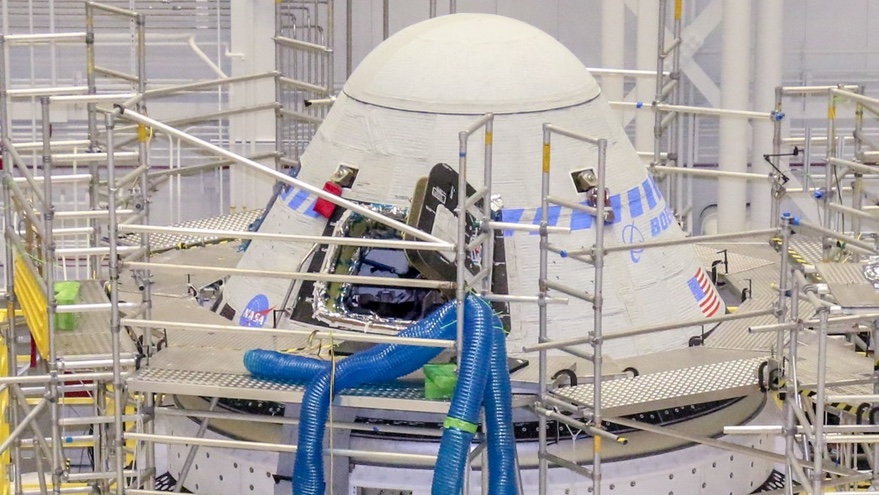WASHINGTON — NASA and Boeing have scheduled a second uncrewed test flight of the CST-100 Starliner commercial crew spacecraft for July 30.
In separate statements, the agency and the company said they were planning to launch the Starliner on a United Launch Alliance Atlas 5 at 2:53 p.m. Eastern July 30 on the Orbital Flight Test (OFT) 2 mission. A launch that day would allow the spacecraft to dock with the International Space Station on the evening of July 31.
The new launch date comes after NASA and Boeing completed an “integrated mission dress rehearsal” for the mission using a simulator at a Boeing facility in Houston. The five-day simulation covered activities starting 26 hours before launch and going through landing, including docking and undocking from the station.
“It provided another opportunity to run the software end to end with the highest-fidelity hardware and mission controllers in the loop to simulate as close to an actual flight as possible,” John Vollmer, Starliner vice president and program manager at Boeing, said in a company statement.
In addition to performing the dress rehearsal, Boeing has completed all the actions recommended by an independent review team after the original OFT mission in December 2019, which suffered several problems that prevented it from going to the ISS. NASA noted in its statement that those actions are “pending closure” by the agency.
The Starliner that will fly the OFT-2 mission is, at this point, largely ready. Boeing will now focus on processing the spacecraft that will be used for the later Crew Flight Test (CFT) mission until it’s time for prelaunch activities for OFT-2 in midsummer.
While the spacecraft is nearly ready, Boeing has to wait until late July to launch because of both launch schedules on the Eastern Range as well as vehicles visiting the ISS. Starliner can dock at one of two ports on the station, one of which is currently occupied by the Crew-2 Crew Dragon spacecraft. The other will be used by a cargo Dragon mission launching June 3 and scheduled to remain at the station through mid-July.
“The traffic model up there on ISS is something else,” Bob Cabana, director of the Kennedy Space Center, said during a Space Transportation Association presentation May 6 when mentioning the status of the OFT-2 mission, shortly before the NASA and Boeing statements about the new launch date. “Between all the different resupply vehicles and the different crew vehicles going back and forth, it’s getting hard to find a spot to dock up there.”
However, the new launch date is still slightly earlier than expected. In mid-April, NASA officials said they were projecting a launch of OFT-2 in August or September. Boeing said at the time that the Starliner would be “mission-ready” in May should an earlier launch window become available.
NASA and Boeing are holding out hope that, if OFT-2 does launch this summer, it can still fly the CFT mission with three NASA astronauts on board before the end of the year. Cabana said they wanted to fly CFT “hopefully later this year.”
At a meeting of NASA’s Aerospace Safety Advisory Panel May 6, panel member David West said there was “good confidence within NASA” about the launch readiness for OFT-2. However, he added there are “several open items that will require resolution” before the CFT mission, but didn’t elaborate on those issues.
Later in the meeting, another panel member, Amy Donahue, said that NASA and Boeing had finalized plans to conduct an organizational safety assessment of the company. The panel, at its February meeting, complained that NASA had yet to start that safety culture audit, and called on the agency to perform the audit before the CFT mission. NASA said it had delayed the assessment because of complications in conducting it caused by the pandemic.
Donahue said a joint NASA-Boeing team will conduct the assessment “very soon,” and that the results of the assessment should be ready to present at the panel’s next meeting in July.
“We continue to believe that safety culture assessment must be performed soon to ensure that any lingering systemic issues related to risk management, quality and safety are identified and corrected,” she said, “certainly before CFT takes place but now even before OFT-2.”
